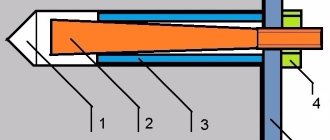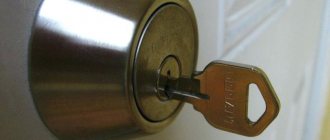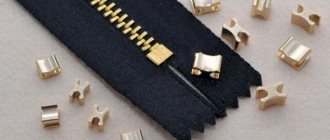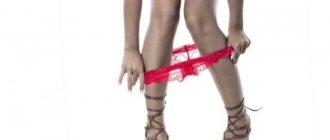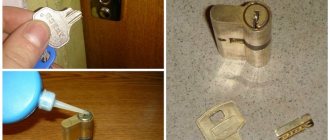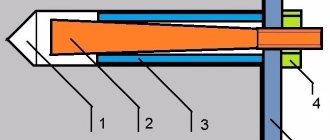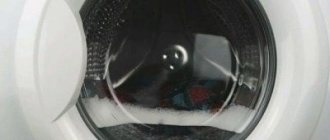Violations of work rules
Safe drilling requires adherence to certain rules, failure to comply with them may result in injury or damage to the tool. The drill chuck is in greatest danger, taking on the main load when in contact with the surface. To avoid unpleasant consequences, it is not recommended to sharply change the drilling angle. It is also necessary to limit the applied force on the drill whose drill bit is in the process of drilling. Excessive load may cause the drill to break or jam in the chuck. To machine heavy-duty surfaces, you must use drills designed for this type of work.
How to remove a drill from a damaged chuck
Very often you have to deal with a situation where the drill becomes tightly jammed in the drill chuck. There is only one question, how to get it? To avoid dismantling the device, remove the jammed drill as follows:
- The drill should be clamped in a vice in a horizontal position to prevent breakage.
- Secure the drill body in a stationary position.
- Take a hammer and then tap the surface of the cartridge with light blows.
- If the problem is not solved, then the blows are applied sharper, but not strong, so as not to damage the product.
- The blows must be applied directly tangentially to the sleeve, and continue until the shank of the nozzle moves out of the cams.
You should remove a jammed drill or attachment from an old Soviet drill using two plumbing wrenches. Using one key, securely fix the drill shaft, and using the second, rotate the chuck. If the movement does not occur, then you need to strike the key hard with a hammer.
It is important to know! To avoid the attachments getting stuck in the drill clamps, you should regularly lubricate the jaws with regular motor oil.
Replacing the cutting tool
The “tail” of the screwdriver drill is fixed in the chuck. It comes in different sizes, as do attachments. If the cutting tool is installed incorrectly, the screwdriver can cause damage to the work process and harm to health. For example, due to the “wrong” drill, holes of different sizes may result with a damaged surface. A sharp element flying out of the cartridge will cause serious injury.
Most modern screwdrivers have jaw chucks. They consist of a cylindrical body, as well as a sleeve and cams. When the sleeve rotates clockwise, the cams simultaneously press the drill.
The process of replacing it is simple, but has a number of individual features. The whole process can be described as follows:
- it is necessary to select the necessary attachment (bit) for the drill;
- then you need to take the cutting tool and install it in the center of the chuck (between the open “cams”);
- after this, it should be secured by turning the sleeve clockwise (with a key-type cartridge, the key is installed in the recess);
- twist the sleeve until the nozzle is secured.
Changing a drill is easy, but first you need to pull out the previous one. There are the following options for the development of the situation:
- standard removal of the drill (the chuck is not damaged);
- pulling out the drill in the absence of a key;
- removing a stuck cutting element.
If the screwdriver is working properly, there should be no problems when replacing its working tool - the operation is elementary. To do this, you need to take a key, which is designed to loosen the cartridge, and insert it into the recess. Turn counterclockwise. Unwinding is carried out due to special teeth that are found on objects. There is also another option for removing the drill. To do this, turn on the reverse rotation mode on the screwdriver, hold the outer body of the chuck and press the “start” button. This will allow the drill to come out easily.
If you do not have a special key, the drill can be removed using a Phillips screwdriver or a nail. It must be inserted into the recess on the cartridge and fix its half. We twist the opposite part of the cartridge by hand. However, if such unwinding does not bring results, then we take a gas wrench or a vice - these tools will help increase the rotation of the cartridge. If the previous options for pulling out the drill failed, then you should resort to “heavy artillery.” In some cases, external damage to the drill makes it difficult to get out. In this situation, it is necessary to relax the “fists” using gas wrenches and a vice. We completely clamp the cartridge with the keys and rotate (unscrew).
A radical option in the most hopeless situation would be to twist the cartridge from a screwdriver. To do this, you need to squeeze it in a vice and forcefully knock out the cutting tool from the inside using a punch. Naturally, after such a procedure, the screwdriver should be taken for repair. To summarize, it is worth noting that the procedure for inserting a drill into a screwdriver is quite simple and even someone who has never done this can handle it. The main thing in this process is to follow the recommendations.
To learn how to insert a drill into a screwdriver, see the following video.
Types of drill heads
Before you figure out how to remove a drill from a drill, you should understand what fastening mechanisms manufacturers use.
There are only two main types:
- Key or toothed
The key type is very reliable, but as the name suggests, a special key is needed to tighten it. It activates special cams that firmly fix the drill. This type is the most reliable, but the drill fastening time leaves much to be desired.
Gear chuck
- Quick-clamping
Quick-release sockets are keyless and are tightened by the user's manual efforts.
Keyless chucks are divided into two more types:
- Double coupling
It consists of two couplings, which means you need two free hands to fix it. One of the advantages is that such couplings are more reliable and require less effort for fastening.
Double coupling quick-release
- Single coupling
Single-coupling ones are much more convenient, since only one hand is used for fastening. This type of chuck ensures no backlash, but more force must be applied to tighten it.
Single coupling quick-release
What to do if the key is lost?
If the key is missing, removing the drill will be quite difficult. The easiest option is to deal with the problem with brute force. The parts of the clamping device are held by the right and left hands and rotated in opposite directions. However, if the chuck is tightened too tightly or the drill has been used for a long time, it is unlikely that you will be able to unscrew the thread.
To enhance the applied impact, use various tools or homemade devices. Here are some ways:
Experienced craftsmen loosen the cartridge with several tangential blows with the edge of the right palm. The drill is held with the left hand in a position with the drill facing away from you. The disadvantage of this method is that if you are not used to it, you can injure your palm. And even with a tightly tightened (and even more so misaligned or jammed) mechanism, this is not a way to deal with it.
Select a metal shaft whose diameter allows it to be inserted into the hole on the chuck. For this purpose, you can use a nail, an old drill, or a hairpin. The main thing is that the metal is strong enough and does not bend from the applied force. The screwdriver is inserted into the slot of the cartridge and acts as a lever (the support goes to the shaft). It is enough to slightly loosen the thread, and you can pull out the drill by unscrewing the mechanism with your hands.
The cartridge is clamped in a vice or held tightly with a gas wrench. The shaft is inserted into the hole, and then, applying muscular force, the mechanism is unscrewed or tightened.
The effectiveness of the described folk methods is significantly less than when using a factory turntable. But it is possible to tighten or loosen the locking mechanism once or twice in this way. After finishing the work, you need to purchase a new key from the store.
The principle of removing a cartridge with a Morse taper
In order to remove such a cartridge we will need tools such as a hammer and a drift. As a drift, it is best to use a puller in the shape of the letter P, which has wedge-shaped legs. The puller is installed so that the axis of the cone is between the paws. Next, it should be slowly driven in between the drill and the chuck. The puller, getting inside, will gradually remove the cartridge from the cone.
Any other tool or device that can be used to influence the cartridge in the direction of the axis can also serve as a puller.
Removing each type of chuck should be done very carefully, since if you rush, you can damage the tools, the drill itself, or get injured.
Why are sparks in a drill dangerous?
An electric drill, like any other power tool, requires systematic maintenance. Spare parts wear out during operation and the lubricant dries out.
Drill brushes require regular replacement. One of the manifestations of the problem is that the electric motor does not work at normal voltage in the network. A bright signal is the formation of a circular fire on the collector. The spectacle is beautiful, but dangerous. In order not to ruin the anchor of the drill, they are changed. It is advisable to buy original ones, not Chinese ones. With them the tool will last much longer.
Photo: brushes for electric drill
Graphite brushes for drill
The design of the drill allows you to replace the brushes yourself. There are models in which there are installation windows for brushes on the body. Replacement is simple:
- The plugs are unscrewed from the installation windows.
- Remove worn brushes.
- New brushes are installed.
- Screw in the plugs.
Other models require minimal disassembly of the drill:
- Remove all screws on the housing. Remove the cover. It is more convenient to leave the screws in their “native” places.
- Take out the brush holders and remove the worn brushes from them.
- Insert new brushes, pushing the spring firmly into place.
- Insert the brush holders into place, tighten the electrical contact of the supply wire well.
- Close the housing cover and tighten the screws.
How to release a double-sleeve chuck
Unlike a key cartridge, this type of cartridge does not have teeth and, accordingly, a stop. Its rings are relatively smooth. In this case, the ideal solution is a removable “magazine” holder, which often comes complete with modern drills. You will also need a hammer:
- Use the holder to grasp the upper coupling (ring) closest to the drill and fix it as securely as possible.
- Clamp the drill with a vice, clamp, in your hands or between your knees.
- Strike the “magazine” handle forcefully in the direction in which the upper coupling normally rotates.
One blow is enough - the ring moves and the drill is released quite easily. To make sliding easier, it is permissible to drop a little oil or grease between the chuck jaws or under the clutch.
Existing types of fastening
The chuck is attached to the shaft of any drill, screwdriver or hammer drill in two ways - using a threaded connection or on a cone. A variation of the threaded connection is the use of an additional locking screw.
Threaded fastening means that an identical thread is made on the drill shaft and on the internal channel - metric or inch. Consequently, in this case, during repairs, the question is raised of how to unscrew the cartridge. The type of thread and its main parameters are marked on the body. For example, the designation 1.5-15M13x1.2 is stamped on the body, which means the following:
The principle of removing the drill chuck.
- 1.5 and 15 – minimum and maximum diameter of the drill shank in mm;
- M13 – metric thread with a diameter of 13 mm;
- 1.2 – thread pitch.
If an inch thread is used, then the designation UNF is entered, and the diameter is indicated in inches (for example, 1/2). When replacing a cartridge, be sure to check that the markings match the mounting dimensions. Modern drills mostly have inch threads, which meets international standards and expands the possibilities of interchangeability.
To ensure secure fastening to the shaft, a locking screw is installed inside the device. This screw has a left-hand thread, i.e. In order to unscrew it, you need to twist it clockwise.
The second method of attaching the chuck to the drill shaft is based on the use of a Morse taper. In this case, the end of the motor shaft is made in the form of a cone. The internal channel at the bottom end has a similar conical part. The cartridge is simply pressed onto the shaft cone with force. The marking of such elements has several meanings: B10, B12, B16 and B18, where B means the use of a Morse taper, and the numbers indicate the maximum diameter of the drill shank that can be fixed in this chuck. This method of fastening is quite common, especially in screwdrivers.
How to disassemble a drill chuck
Disassembling the device is necessary in order to extend the service life of the product. During disassembly, product parts are cleaned and lubricated. Disassembly can be done as follows:
- We use a hammer drill with a special adapter onto which a jaw chuck with a threaded connection is placed.
- The fists should be hidden inside.
- A sheet of polystyrene foam or expanded polystyrene is applied to the end of the device. After this, the back side of the foam should rest against the wall.
- The hammer drill is started in impact mode. The cartridge will be disassembled within 2-3 seconds.
The video describes the disassembly process in more detail. The video also shows the process of reassembling it. There are many other disassembly options, but the simplest and most acceptable is the one described above.
In conclusion, it should be emphasized that if you want to extend the life of your tools, be sure to set aside time for diagnostic procedures.
Preparing for work
Proper preparation should be made before starting work. To determine whether a tool is ready to perform tasks, there are several conditions:
- When the drill is started using the power cord, it must be connected to the mains;
- If it operates using a battery, it must be connected and charged;
- A drill is inserted and fixed inside the drill.
To check the functionality of the drill, you need to click on the power button. If the chuck rotates fast enough, there is enough charge and you can start working. If it rotates very slowly, then the battery is discharged and needs to be recharged.
Concrete accessories
The drill bit sizes for concrete hammer drills may vary. This indicator depends on the diameter of the hole you need to get. But all drills for stone, brick and similar coatings have a hard tip. It is made from a special alloy, which gives it higher characteristics. Drilling of such coatings occurs through impact-rotational motion.
If conventional bits have a cylinder-shaped shank, then the drill bit for a hammer drill comes in other shapes. To drill a small hole in a concrete surface, use an auger drill with a carbide tip. Large holes are cut using a crown with carbide teeth along the edges. Diamond-coated tools are also popular due to their durability.
For granite surfaces, it is customary to use nozzles based on Pobedit. This tool has different softness and is therefore suitable for different surfaces. For ceramic tiles, an excellent solution would be a spear-shaped drill with a tungsten or pobedit tip. For glass, it is recommended to use a crown with a special coating around the edges.
How to avoid losing your key?
To avoid being left empty-handed with unfinished work, it is important to properly organize your workspace. This organization will allow you not to lose sight of the key every time you change a tool.
The easiest way to protect against loss is in your own workshop. Here you need to create a permanent place to store the turntable and always put it there. In this case, the storage location should be quite convenient and at hand:
- Many manufacturers provide their instruments with an eyelet for attaching a turntable. It is placed either under the handle or close to the fork. By inserting the key into this hole, you can rest assured that it will not get lost. The only drawback is that over time the fastening wears out and breaks.
- The eyelet for the key is made from insulating tape. It is attached to the power cord. The attachment point is usually located 50–60 cm from the handle. This way the turntable will not interfere with your work and will always remain at hand.
- Having attached a ring to the key, you can hang it on a hook next to the workbench.
If during the work it turns out that the pinwheel from the clamping mechanism has been lost, the main thing is not to panic. Using traditional methods, it is quite possible to release the chuck, remove or change the drill, and finish the job.
About the advantages and disadvantages of nozzles
Among the advantages, it is worth noting the efficiency indicators of such a grindstone mounted on a drill. It is important to remember that these tools are not intended for intensive use. Without placing excessively high demands on these devices, we can say that they are quite effective in fulfilling their intended purpose. In other words, for home workshops, this is an ideal tool that will allow drills to be sharpened quickly and correctly at any time.
In addition, such products have a low cost, which is a definite advantage when purchasing them. They are easy to operate, and their use does not require any specific skills in sharpening cutting or drilling tools.
According to the experts, in addition to its advantages, the device also has disadvantages:
- Most often, attachments perform editing of the cutting part of a “squat” tool, rather than sharpening it. When using the device for full sharpening of “dead” tools, the emery wheel will last a relatively short time;
- when used, reliable fixation on the power tool is not ensured;
- often the sharpening angles are standard in the device and cannot be changed;
- there is a possibility of the rotating chuck getting caught on the internal surfaces of the adapter coupling. To exclude this, you should select the appropriate diameters and try on the device during the purchase process;
- inconvenience of holding and turning on the drill while working with one hand, and directing the drill with the other. To ensure greater comfort, it is recommended to use brackets that allow you to fix the power tool.
READ How to Correctly Drill a Concrete Wall with an Impact Drill
To sum up the advantages and disadvantages of drill attachments, we can note that they are practical when used for work in a home workshop; they are not suitable for production tasks.
Operating procedure
The lathe allows you to quickly and efficiently form turns on any type of pipe. In order to do this you need to know how to cut a thread correctly:
- The pipe should be clamped securely using a vice or other device.
- It is necessary to remove the outer chamfer from the already prepared and cleaned pipe.
- Insert a holder with a predetermined diameter into the holder.
- Thoroughly lubricate the pipe and threading tool with lubricant.
- The lectern is attached to the pipe in this way so that its position is perpendicular to the axis of the product. If the thread-cutting tool is installed even with a slight misalignment, then the threads may break or the value of its diameter may change.
- The tool holder must be rotated clockwise. This will ensure that a right-hand cut is created on the product.
- After making 3-5 turns, the device is untwisted in the opposite direction, during the process metal shavings will be removed.
- You need to rotate the tool very smoothly, and without making sudden jerks.
- It is important to remember to periodically lubricate the cutters and the internal surface of the joint with lubricant.
- After the last turn is created, the lerka returns to the top, and then goes through the finished turns again.
Please note that the connection length should not be more than 10 mm. This distance is standard for the vast majority of residential piping systems.
How to drill metal
Drilling metal surfaces has its own characteristics. First of all, you need to choose a drill designed for these purposes. A wood or stone drill bit is not suitable for metal, stainless steel or cast iron. These drills differ not only in the grade of steel, but also in the sharpening angle of the cutting edge.
When working, there is no need to rotate the drill at high speed; the drill will slide along the surface without catching the material. The optimal speed when drilling metal is low, when the naked eye can see how thin chips are formed. The pressure on the drill can be significant, but within reasonable limits so that the drill . When drilling steel and cast iron, it is recommended to lubricate the drill with machine oil for cooling.
To ensure that the drill catches on solid material, it is recommended to make a recess at the drilling point with a plumber's core. The drill will not move to the side.
For newbies
So, let's start with the simplest case - with inexperienced users. Screwdrivers have something called a torque regulator. It looks like a scale around the front of the screwdriver, which is right behind the chuck. There are numbers on it from 1 to 10, 15, 20 or even more - different for different models - and the last position on it is indicated in the form of a drill. If you rotate this regulator and set it opposite the special mark so that one of the numbers is next to it, then when a certain torque is reached, the cartridge will no longer rotate, but will begin to click. If you put it on a “drill”, then the screwdriver will try to twist with all its might, as much as the engine power allows it.
However, it is worth noting that with two-speed screwdrivers, at the second speed, even in the “drill” position, if the torque reaches a certain value, then a protective system is triggered, which simply turns off the current supply. At the very first speed, the screwdriver will also try to turn “to the last.”
And a beginner can start drilling or screwing screws, for example, when the torque regulator is set to one of the numbers, or the screwdriver is set to the second speed (and it is recommended to drill at it).
The drill can be clamped quite tightly, and as a result, when you start to release the drill or bit in the standard way (by turning on the reverse, holding the chuck and pressing the start button), either the torque limiter or the protective system may work.
Therefore, in such a situation, you just need to set the screwdriver to first speed and set the torque regulator to the “drill” position. On single-speed models, you only need to set the torque regulator to the “drill” position. Well, then again we unscrew it in the standard way.
Reasons why it is difficult to remove the drill
Types of drills: a - spiral centerless; b - spiral with a center and cutters; c - spiral with a screw center; g – feather center; d - center; e - gimlet; g – countersinking; z - groove; and - cork.
When working with a drill, sometimes difficulties arise when replacing a drill due to the removal of a previously used drill from the chuck. This problem can vary in severity, depending on the cause. The simplest and most common reason is the application of excessive force when clamping the drill, if there are no limiting mechanisms in the design of the chuck. This phenomenon most often occurs when the impact method is used to tighten the drill at the final stage, for example, using a mallet. Drill jamming can also occur if it is forcefully tightened when it is incorrectly placed in the space between the cams. This is typical when using a small diameter drill.
A more complex tool jamming mechanism can occur when using a low-quality drill. So, if it is made of a soft material, then when it rotates, metal shavings may appear, removed from the surface, which clog the gap between the cams and the drill, as well as between the cams. This can make it difficult to open the jaws when trying to loosen the drill. Difficulties in removal may arise if the drill sinks too deeply into the chuck during operation. The task becomes more complicated if the drill, in addition to such jamming, also breaks at the level of the upper end of the cartridge.
The cause of breakage of the drill in the drill chuck may be a violation of the drilling mode.
The cause of destruction, in addition to the use of low-quality material, can be a violation of the drilling mode: unexpected tilt of the drill, excessive vertical load, an attempt to drill heavy-duty material, etc.
Finally, the reason that it is not possible to remove the drill may be the jamming of the cartridge itself. Several possible reasons should be highlighted. The first reason, not related to the failure of the cartridge, is explained by the ingress of foreign particles that impede movement into the area of the threaded connection of the control element and the housing. Such particles can be dirt, metal dust or small shavings, etc. In this case, it is not possible to ensure rotation of the adjusting sleeve or key.
The reason that you cannot get the drill out may be a failure of the chuck. This can be caused by either a manufacturing defect or temporary wear of the cams or the control element. The reason may also be the failure of the spring locking mechanism, which does not release the control element when the button is pressed.
